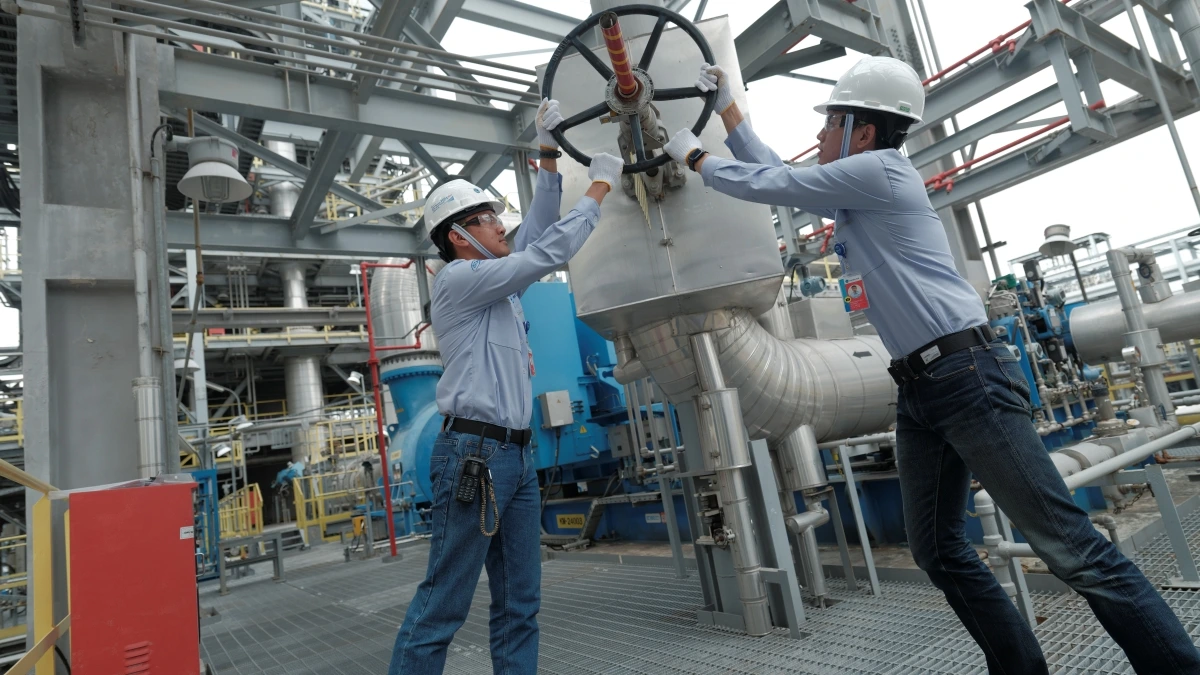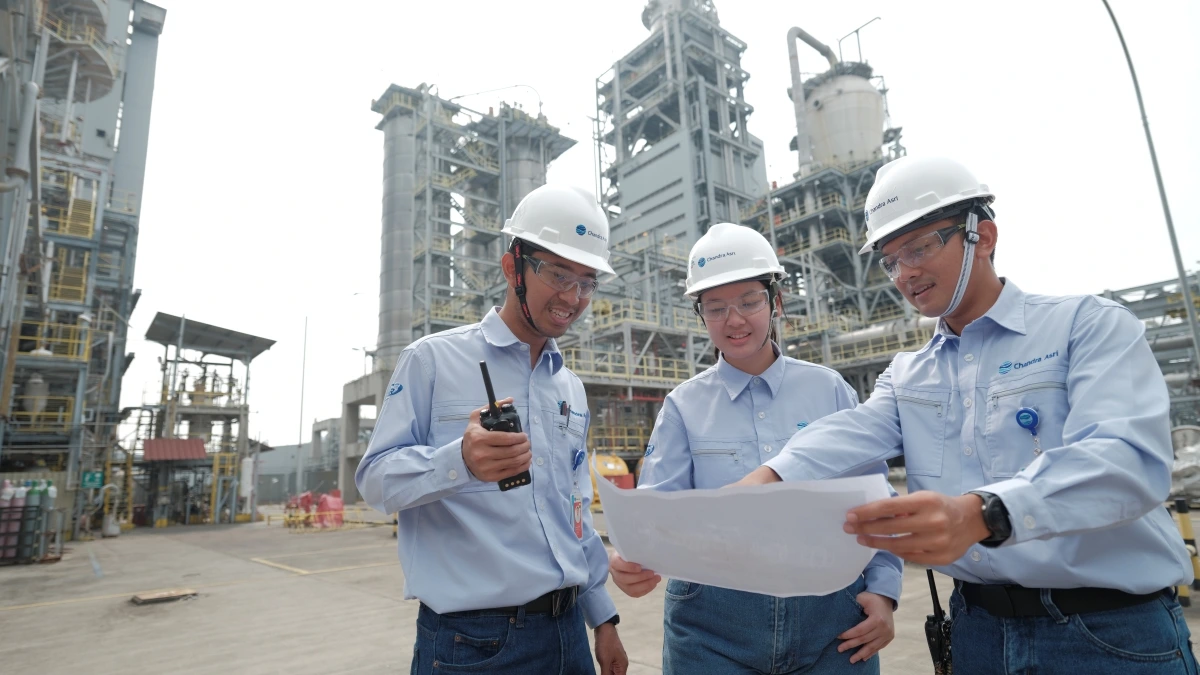
18-11-2025
What Is Safety Induction & Why Is It Important for a Company?
In the workplace, especially in factories and manufacturing facilities, it is essential to understand Occupational Health and Safety (OHS). This ensures that you work safely and securely.
Generally, OHS and other safety regulations are delivered to new employees during safety induction. Safety induction is a primary step that should be explained to new contractors, employees, or visitors, especially regarding how to work safely on the site.
This article discusses the concept of safety induction in the workplace. So, read this article until the end!
What Is Safety Induction?
Safety induction is training provided to new employees to prepare them for their roles in the company. It aims to ensure that new employees understand their responsibilities, the organizational structure, and the associated occupational safety risks.
That way, the new employees will be aware of and take appropriate control measures if dangerous situations arise in the workplace.
In Indonesia, safety induction is regulated in Law Number 1 of 1970 regarding Work Safety, specifically in Chapter V. It stipulates that the manager must explain the potential occupational risks, personal protective equipment, and safe work practices.
Why Is Safety Induction Important?

Safety induction is one of the efforts to prevent work accidents that every employee must acknowledge.
The Indonesian Ministry of Manpower reported that from January to December 2024, there were 462,241 work accident cases, with 91.65% of them experienced by wage-earning participants.
Typically, employees who are not equipped with adequate safety induction tend to be more likely to disregard occupational safety and security regulations.
As a result, they are more prone to accidents due to their lack of knowledge in handling emergencies. That’s why safety induction is strongly emphasized to all company employees.
Some reasons to do safety induction are as follows:
- Providing necessary training related to safety procedures, a guide to use protective equipment, and emergency protocols.
- Creating a safe environment for all employees.
- Optimizing the process of transferring roles to new employees while maintaining work quality.
- Ensuring that new employees understand their roles, rights, and responsibilities in the company, as well as existing regulations.
- Training new employees to perform first aid for work accidents, exit evacuation routes, know assembly points, and carry out evacuation procedures.
- Helping new employees understand the company's organizational structure and work culture.
Safety induction must be provided to visitors, contractors, and employees before they begin any activities. However, this training does not need to be repeated every day. You can conduct a safety induction for new employees or when new policies are introduced.
You can also conduct periodic safety induction training. For example, you can do it once a year so that existing employees remain familiar with the protocols that must be implemented.
Read also: Human Resource Development: Functions and Strategies
Procedures of Safety Induction Training
New employees will receive safety induction training from the first day to help them quickly adapt to the working environment. Some of the key topics emphasized in the training include occupational safety risks, emergency procedures, safe work practices, occupational safety and health policies, specialized tools, and first aid.
To understand the procedures of safety induction training, read the explanation below:
1. Introduction to Work Environment and Culture
New employees, contractors, and visitors will be introduced to the worksite, including the Personal Protective Equipment (PPE) area, evacuation routes, and high-risk areas. Moreover, they will gain more information about potential risks in the workplace.
2. Personal Protective Equipment (PPE)
Managers are also responsible for teaching new employees how to use Personal Protective Equipment (PPE) correctly and ensuring that they use it while working. Some PPE commonly found in offices is helmets, masks, goggles, and gloves.
3. Emergency Response Training
Not only are work procedures and self-protection emphasized, but new employees are also trained to behave appropriately in emergency situations, such as those caused by a machine accident, natural disaster, or fire.
4. Evaluation
Generally, managers evaluate employees to determine whether they have fully understood the training they received and are suitable for their role. If they meet the requirements, they will receive a safety induction certification or a special card.
Advantages of Safety Induction

Safety induction gives some advantages for employees and companies, such as:
Advantages for Companies:
- Improving employee compliance with regulations, especially Occupational Health and Safety (OHS) regulations.
- Increasing employees’ engagement and loyalty because they work safely.
- Reducing accident-caused costs.
- Improving the company’s reputation regarding proper OHS.
Advantages for Employees:
- Employees possess a reasonable and adequate understanding of OHS.
- Reduces the risk of workplace accidents.
- Improves skills related to safety induction.
- Increases employee confidence because employees understand OHS procedures and know how to take action in emergencies.
Read also: What Is Green Technology? Benefits, Adaptation, and Examples
The Implementation of OHS in Chandra Asri Group
Every employee must understand Occupational Health and Safety (OHS) to reduce work accident risks and ensure that operational processes run smoothly.
Chandra Asri Group, as a prominent chemical, energy, and infrastructure solution company in Southeast Asia, implements several OHS procedures, such as:
1. PAUSE
PAUSE is a mandatory OHS procedure for every Chandra Asri Group employee. P stands for Pause, which means employees need to stop for a moment if they feel uncertain.
Then, A stands for Assess, which means employees must observe the work area to identify hazards. U, or Understand, refers to the requirement that employees must understand how to continue working safely. S, or Share, signifies the need to share information on safe working practices. E, or Execute, indicates that employees must carry out the work.
2. Personal Protective Equipment (PPE)
All Chandra Asri Group employees must wear PPE when working in the factory area. Moreover, we have two kinds of PPE: basic and special PPE.
Basic PPE includes long sleeves, safety goggles, a safety helmet, and safety shoes. Then, special PPE consists of a mask, coveralls, gloves, a body harness, and earmuffs.
In addition to these procedures, Chandra Asri Group provides safety induction training to introduce safe work permits and other workplace hazards, maintain operational reliability in the factory, and implement emergency response procedures (ERP), among other measures, to ensure a safe working environment.
That concludes the information about safety induction that you can learn. Safety induction is the most crucial part of operational procedures, ensuring that every employee understands how to respond to emergencies and minimize the risks of work-related accidents.
As a leading petrochemical company in Indonesia, Chandra Asri Group not only prioritizes service and product quality but also makes sure that every employee works safely.
Read also: What Is a Green Building? Functions, Benefits, and Examples